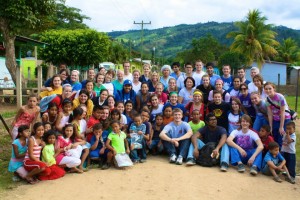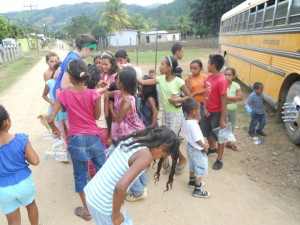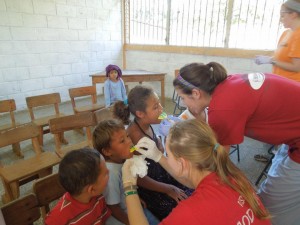 My Experiences: I have been on two mission trips while in physical therapy school at Saint Louis University. The first, a six day Global Medical Brigade to Honduras and the second, a ten day Global Medical-Public Health Hybrid Brigade to Nicaragua. Global Brigades (GB) the world’s largest student-run movement for global health and is an organization is one to be modeled after. GB upholds a sustainable organization in its communities by organizing a full-staff of local community members as well as foreign volunteers. In-country staff support the community between brigades until they become independent of resources that brigades provide. Each community has its own plan to empower community leaders and develop infrastructure to become sustainable, independent from GB.
My Experiences: I have been on two mission trips while in physical therapy school at Saint Louis University. The first, a six day Global Medical Brigade to Honduras and the second, a ten day Global Medical-Public Health Hybrid Brigade to Nicaragua. Global Brigades (GB) the world’s largest student-run movement for global health and is an organization is one to be modeled after. GB upholds a sustainable organization in its communities by organizing a full-staff of local community members as well as foreign volunteers. In-country staff support the community between brigades until they become independent of resources that brigades provide. Each community has its own plan to empower community leaders and develop infrastructure to become sustainable, independent from GB.
 So What? Having been on two of these brigades, I was the only (near) physical therapist on the trips. I was a student with minimal clinical training. Many of these patients were very poor; working long hours performing laborious jobs, walking long distances, or homemaking all day. Physical therapists are a necessity on medical missions because physical therapy is one of the most sustainable medical professions. Physical therapists can educate their patients on simple techniques such as body mechanics, proper posture, stretches and exercises to try and correct patient weakness and pain issues. A lot of these communities lack access to medicine, but this includes physical therapy as well. No medical doctor nor medical student has the specialization in the musculoskeletal system as physical therapists do in order to educate these individuals presenting with inevitable aches and pains due to the nature of their lives!
So What? Having been on two of these brigades, I was the only (near) physical therapist on the trips. I was a student with minimal clinical training. Many of these patients were very poor; working long hours performing laborious jobs, walking long distances, or homemaking all day. Physical therapists are a necessity on medical missions because physical therapy is one of the most sustainable medical professions. Physical therapists can educate their patients on simple techniques such as body mechanics, proper posture, stretches and exercises to try and correct patient weakness and pain issues. A lot of these communities lack access to medicine, but this includes physical therapy as well. No medical doctor nor medical student has the specialization in the musculoskeletal system as physical therapists do in order to educate these individuals presenting with inevitable aches and pains due to the nature of their lives!
 GB is an amazing charity supported by Athletico as a company and via Athletico PTs volunteering time, money and knowledge on these trips! Which leads me to another awesome aspect of Global Brigades; the theory is based on a system of collectively implementing health, economic, and education initiatives to strategically meet a community’s goals for development. How? The many different brigades offered: business, dental, engineering, environmental, human rights, medical, microfinance, public health, and water. Physical therapists on these missions add a pivotal piece to this sustainable model. The work to empower patients to take control of their aches and pains, assisting in the GB model of combating every angle of misfortune in each community to empower these areas to live and thrive independently.
GB is an amazing charity supported by Athletico as a company and via Athletico PTs volunteering time, money and knowledge on these trips! Which leads me to another awesome aspect of Global Brigades; the theory is based on a system of collectively implementing health, economic, and education initiatives to strategically meet a community’s goals for development. How? The many different brigades offered: business, dental, engineering, environmental, human rights, medical, microfinance, public health, and water. Physical therapists on these missions add a pivotal piece to this sustainable model. The work to empower patients to take control of their aches and pains, assisting in the GB model of combating every angle of misfortune in each community to empower these areas to live and thrive independently.
https://www.athletico.com/community/employee-involvement/global-medical-brigades/
https://www.globalbrigades.org/


1 Comment
Amanda DiGangi
Will do, stay tuned!!